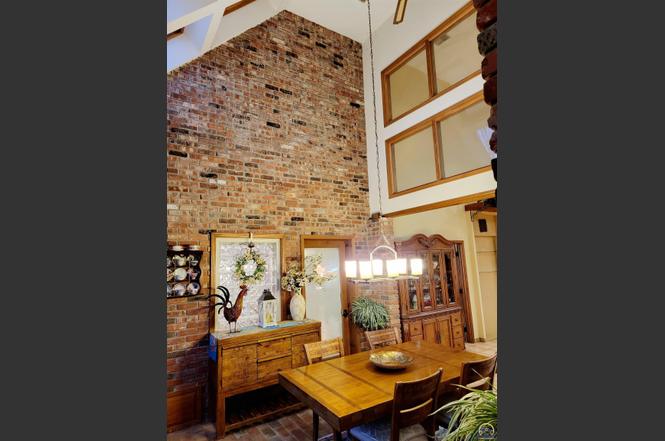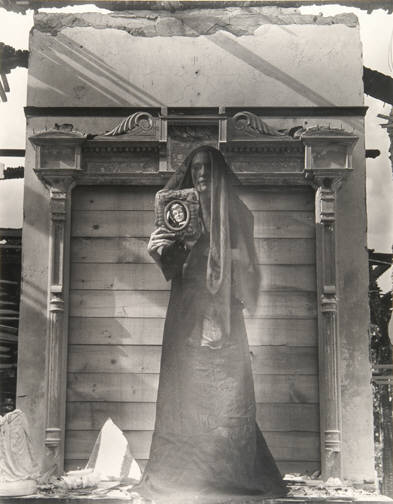
We observed last evening the infinitely extending lines of the vast web which the Electric Spider has spun about the world and the innumerable wrecks of kites fluttering thereupon, like the bodies of gaudy flies-strange lines of tattered objects extending far into the horizon and tracking out the course of the electric messengers beyond the point at which the slender threads cease to remain visible. For light waltzes across the secrets and surprises of day and night alike, while an ardent and enterprising camera fills in the empty spaces on their dance cards.Looking out into the clear blue of the night from one of those jutting balconies which constitute a summer luxury in the Creole city, the eye sometimes marks the thin black threads which the telegraph wires draw sharply against the sky. In photographs as in life, time moves solely in one direction but light and dark play unaccountable games.
Yet sometimes even her daylight pictures balk at unlimited sun and court enough mist to baffle the eye instead: obscurity making a hesitant bid for dominance. On occasion, Harvey too relinquishes night in favor of sunlight: a girl in a patterned dress moves through a sunlit orchard that half hides her, binding her into the orchard’s growth a red chair and a red-painted wall do their best to imitate the brilliance of pomegranate seeds.

Dusk comes on without fail every evening day makes a habit of vanquishing night. Harvey herself says these pictures “mark notations on time passing: A gold birthday cake, seasons changing, fallen deep red apples.” Indeed, nature can outdo clocks as a reminder that time is inexorable. It is these flowers / lighting the yard.” Winston Link’s midnight trains - but Harvey’s light sources are uncommonly elusive and unexpected, even verging on conundrum, as if in agreement with Louise Gluck’s poem: Night photographs have since become commonplace think of Brassai’s Paris de Nuit and O. She tends a garden world at night and her camera hones in on radiance, gleam and discoveries hidden in the shadows a hand reaching out, an arm.įor centuries, painters like Georges de la Tour and Willem Claes Heda lit up corners in paintings otherwise drenched in black, but when Alfred Stieglitz took a photograph one dark night in 1898 it was considered a feat. She dances on the edge of revelation: a sliver of light from a door and a hot pink balloon disclose a child a vigorous moon drenches the earth with a dazzle of stars.

In the Garden by Vicki Goldberg - Cig Harvey trips the light fantastic in the dark. In 2017 Cig was awarded the prestigious 2017 Excellence in Teaching Award from Center and in 2018 she was named the 2018 Prix Virginia Laureate, an international photography award.

In 2019 she will have a solo exhibition at the Ogunquit Museum of American Art in Maine.Ĭig has been a nominee for John Gutmann fellowship, the Santa Fe Prize, and Prix Pictet, and a finalist for the BMW Prize, the Karl Lagerfield Collection at Paris Photo, the Clarence John Laughlin Award and The Taylor Messing Photographic Portrait Prize. Cig had her first solo museum show at the Stenersen Museum in Oslo, Norway, in the spring of 2012 in conjunction with the release of her monograph, You Look At Me Like An Emergency (Schilt Publishing, 2012). The photographs and artist books of Cig Harvey, have been widely exhibited and remain in the permanent collections of major museums and collections, including the Museum of Fine Arts, Houston, Texas the Farnsworth Art Museum, Rockland, Maine and the International Museum of Photography and Film at the George Eastman House, Rochester, New York. Rich in implied narrative, Harvey’s work is deeply rooted in the natural environment, and offers explorations of belonging and familial relationships. Cig Harvey is an artist whose practice seeks to find the magical in everyday life.


 0 kommentar(er)
0 kommentar(er)
